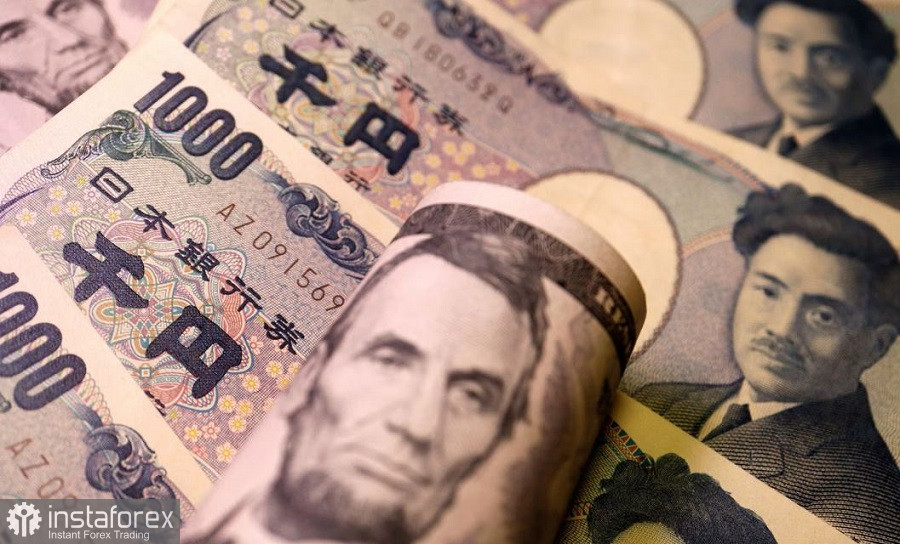The USD/JPY pair is going against the market mood: on Monday, the price tested the 130th figure, despite the dollar's general decline across the market. Obviously, such price dynamics is primarily due to the weakening yen, which was under pressure after the release of the minutes of the Bank of Japan's December meeting. Even the inflation report, which was released last Friday in Japan, did not help the bears, although all components of the report showed an uptrend. Traders of the pair are forced to trade in uncertainty and at the same time they have to reckon with the position of BOJ Governor Haruhiko Kuroda and his supporters in the Governing Council.
A short discussion
Recall that at the end of the first meeting in 2023, the Japanese central bank made it clear that it does not intend to abandon the super-loose monetary policy to which it has adhered for many years. The central bank has maintained the status quo, despite the bold assumptions of some experts that it will take another step towards the normalization of monetary policy. However, the BOJ retained the previous parameters of monetary policy, worsened the forecast for growth of the Japanese economy and predicted a slowdown in inflation in the second half of this year. The short-term interest rate on commercial bank deposits at the central bank remained at -0.1% per annum, the target yield on ten-year government bonds - about zero. No changes in the range of yields were also made, again contrary to the expectations of some analysts. Moreover, Kuroda reiterated at a press conference "in a separate line" that December's decision to expand the permissible range of fluctuations in the yield of 10-year Japanese Government Bonds (JGB) does not indicate a pivot of the monetary course.

In fact, Kuroda reiterated this even before the January meeting, but traders were focused on the future - in just 3.5 months Kuroda will leave his position, completing his second term in office. That is why market participants mostly ignored Kuroda's dovish rhetoric, listening to the stance of his possible successors.
However, published on Monday, the minutes of the December meeting forced traders to "listen" to the central bank's position.
Minutes of the December meeting
Thus, according to the document, some members of the Governing Council pointed out that it was necessary for the Bank to clearly explain the expansion of the range of 10-year JGB yield.
Take note that this wording is significant, as it indicates the consolidated position of the dovish wing of the Governing Council. The minutes, unfortunately, does not specify the number of those who adhere to this phrase. But even without this information, it was clear that it will not be easy for the next BOJ governor (in case he will adhere to a hawkish position) to turn the course of the Bank, given the dovish views of a number of representatives of the Governing Council.
In other words, the minutes of the December meeting loosened the bears' grip, while bulls took the initiative and managed to get near the resistance level of 131.00 (middle line of the Bollinger Bands indicator on the D1 timeframe).
Correction or trend reversal?
Given the current fundamental picture, there is a logical question: can we now talk about the first signs of trend reversal? In my opinion, the current price growth should be considered as a large-scale correction, which a priori has a temporary nature.
First of all, very soon - in several weeks - the candidates for the next BOJ governor will be announced. Kuroda's term expires in April, but the procedure of electing a successor will start earlier, in February. Prime Minister Fumio Kishida said that he would name a candidate for the new head of the Japanese central bank during the next parliamentary session that begins early next month. Take note that the main contenders for the post (according to the media) hold more hawkish views than Kuroda. Therefore, barring the "dark horse" option, the very fact that a hawkish candidate has been nominated for parliament would be supportive for the yen.
Second, inflation in Japan continues to rise, despite Kuroda's reassurance. According to data released, the overall CPI rose 4.0% in December, a new high in the past 41 years. The CPI excluding fresh food also showed positive dynamics (growth up to 4.0%), as did the consumer price index excluding food and energy (this indicator grew to 3.0%). Recall that last week's Domestic Corporate Goods Price Index (which measures prices of goods purchased by Japanese corporations) jumped 10.2% year-over-year in December, beating the average market forecast of 9.5% growth.
Third, we should not forget that the dollar is in a rather precarious position. Emotional reaction to the BOJ's minutes will soon fade, while the US currency will continue to be under pressure, especially if US GDP growth data and the core PCE index come out this week in the red zone.
Findings
In my opinion, long positions are risky. It is noteworthy that the bulls failed to impulsively overcome the resistance level of 131.00 (the middle line of the Bollinger Bands on the daily chart). If in the short term, the bulls fail to gain a foothold in the area of the 131st figure, then short positions will be relevant again. In this case, the first bearish target will be located at 129.30 (the lower limit of the Kumo cloud, coinciding with the middle line of the Bollinger Bands on a four-hour chart).





















